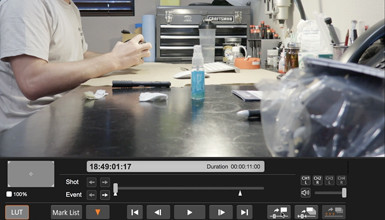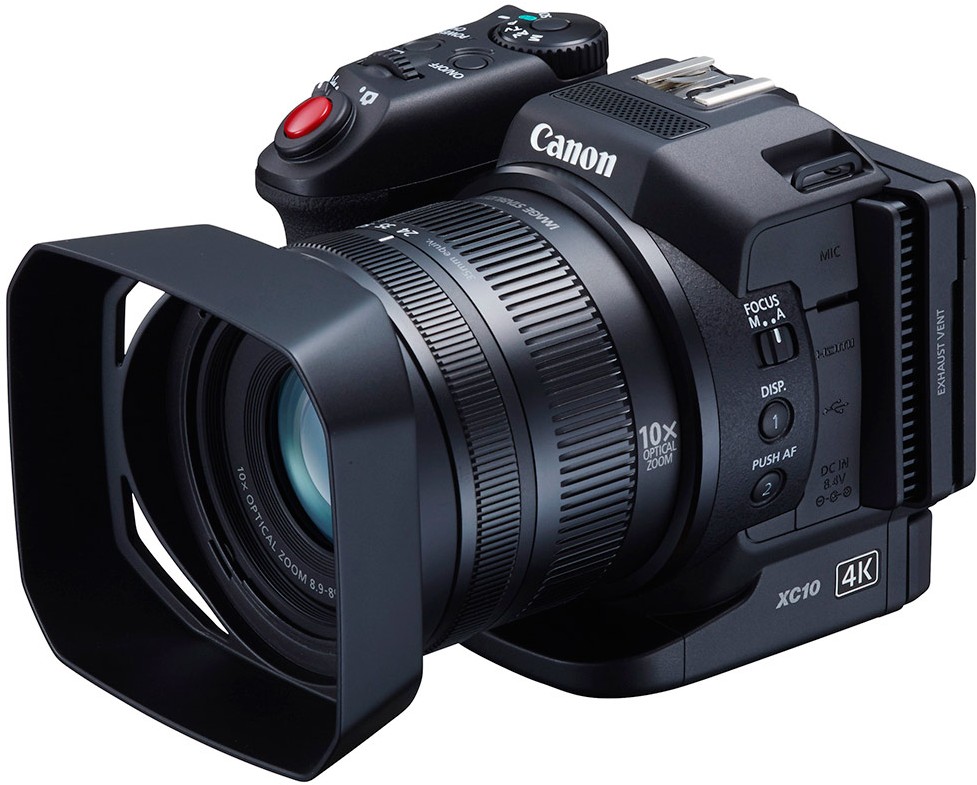
At the recent VII Evolution tour stop in Washington DC, VII photographer Ed Kashi recalled several situations in which he was filming an interview with his DSLR but also wanted to capture some portraits. He waited for a good stopping point during the interview, then quickly switched his camera to stills mode to fire off a few shots. Although he thought he left enough breathing room between the end of the interview and taking the still shot, his editor (who had the full audio of the interview) still had to edit around the momentary blackout while the camera took the still (not to mention the audio issues of hearing the shutter).
Like many others, Ed was switching his DSLR to stills mode because he wanted the high resolution still images it offered. Of course, one could pull a still frame from the video file in post, but when shooting HD video at 1920 x 1080 the extracted frame is only a 2 megapixel equivalent. One of the reasons to consider shooting 4K or UHD video is that a frame grab would net you a 8.8 or 8.2 megapixel still, but pulling stills from video files in post is nevertheless a time consuming process.
One of the surprise announcements from this year's NAB was the Canon XC10, a compact UHD camcorder that offers a true stills and motion workflow. The XC10 is capable of recording UHD files in the same new XF-AVC codec as the recently announced C300 Mark II, up to 30p. Because XF-AVC is an intra-frame codec (each frame is individually compressed), you can pull high quality 8.2 megapixel frame grabs from the recorded UHD file. The XC10 makes this process very straightforward. You can pull grabs directly from the camera while reviewing previously-shot footage, and save them directly to the SD card. This feature is exactly what Ed could have used in his real world example, as he would have been able to continue shooting his interview without interruption, and upon in-camera footage review, choose the exact moment he wanted for his portrait.
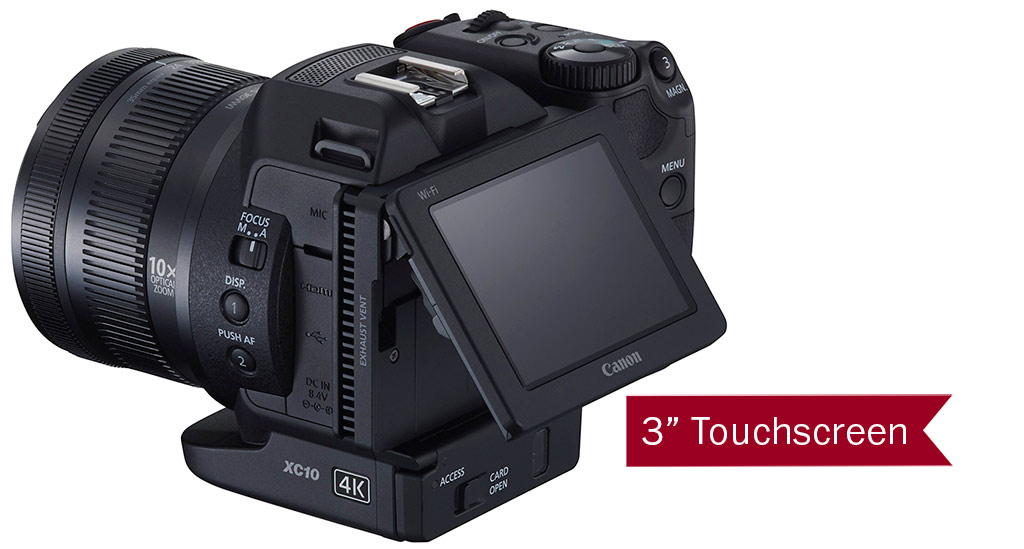
The XC10 can be called a true hybrid camera, as it is capable of capturing 12 megapixel photos while in stills mode, and includes important features for stills shooting like a mechanical shutter, as well as support for Speedlite flash units and other EOS accessories. In video mode, the XC10 incorporates the Canon Log and Wide DR gamma options found in the Cinema EOS line for UHD or over-sampled HD capture. With Canon Log and 12 stops of dynamic range, the XC10 can serve as a nice secondary or "B" camera on a C100 or C300 shoot.
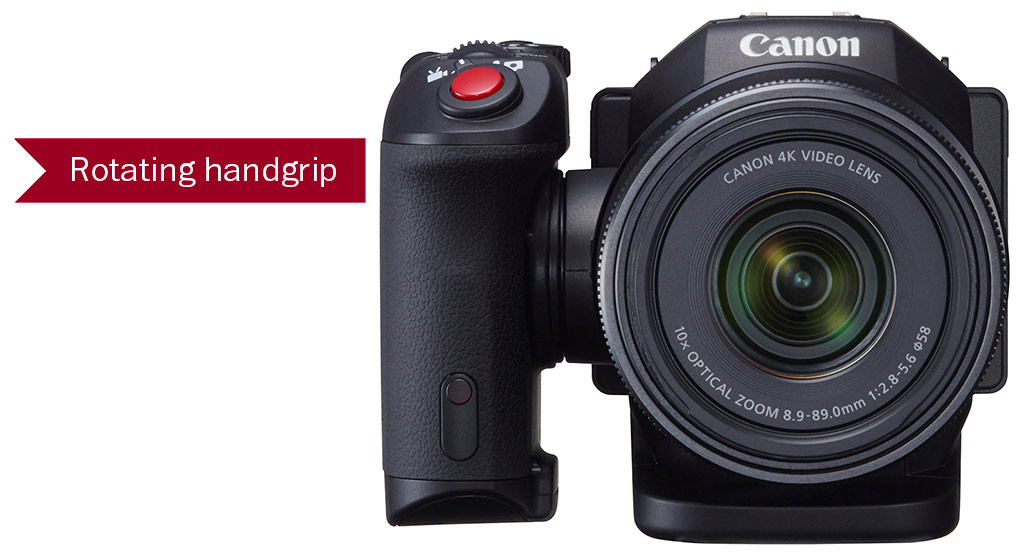
Ergonomically, the XC10 will be immediately familiar with anyone shooting with DSLRs, and it even utilizes the same LP-E6 batteries found in the 5D Mark II, 5D Mark III, 60D, 70D, 6D, 7D, and 7D Mark II. The handgrip rotates for various shooting positions, and the 3" touchscreen articulates for low or high angle shooting. There's also a very clever optical viewfinder attachment that clips to the LCD for additional viewing options, as well as an HDMI 1.4 port that supports 4K 30p output.
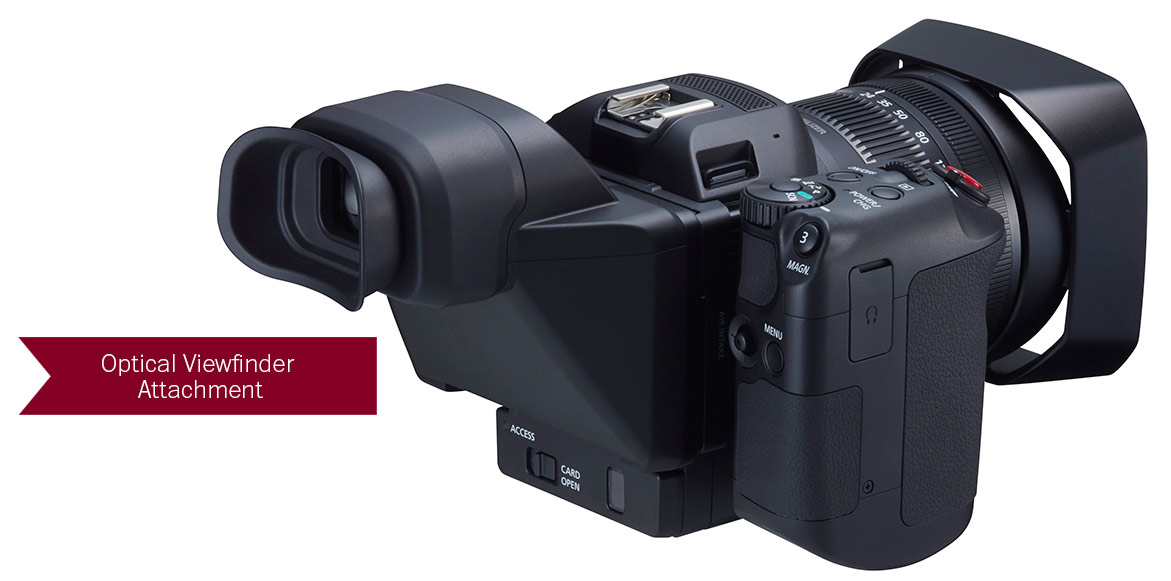
Like the C300 Mark II, UHD video is recorded to CFast2.0 cards, while HD video (utilizing the efficient XF-AVC Long GOP codec) is recorded to standard SDHC / SDXC cards. The chart below breaks this down further.
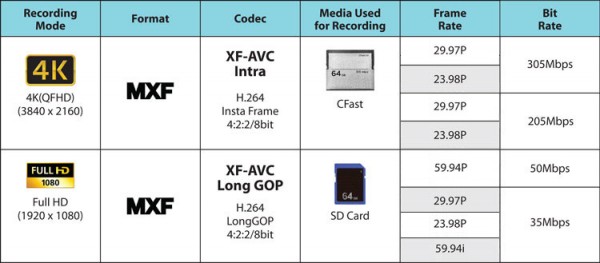
The new 1" sensor is mated to a fixed 10x zoom, with individual focus and zoom rings for manual operation. Designed for 4K acquisition, the compact lens offers a versatile focal length of 27.3 - 273 mm f/2.8-5.6 (full frame 35mm equivalent), and includes optical image stabilization as well as an ND filter. One advantage of using a 1" sensor is that Canon is able to design a compact lens that covers a wide range, which can otherwise be a challenge for anyone shooting S35 (or larger) sensors.
The compact size and powerful feature set of the XC10 offers many unique applications for cinematographers and photographers alike, but we're especially interested in the very accessible hybrid workflow the XC10 offers. With mixed-media projects becoming more popular and shooters being tasked to accomplish more with less, the XC10 opens up new creative possibilities for shooting stills and motion simultaneously. Where we refer to photographers making the transition to video as "stills to motion", perhaps the XC10 can be thought of as the solution for stills from motion.
The XC10 will start shipping in June, for full details and specs, be sure to check out the Canon site. You can also see the camera in-person at the VII Evolution Tour in LA on May 16-17.















